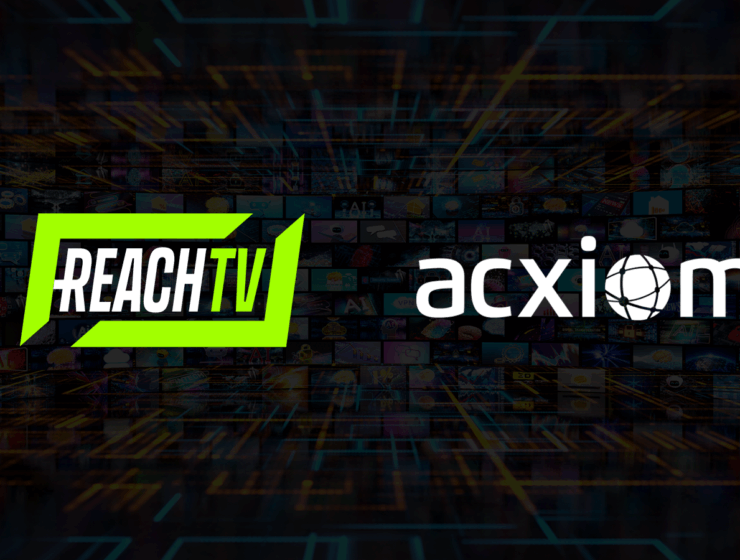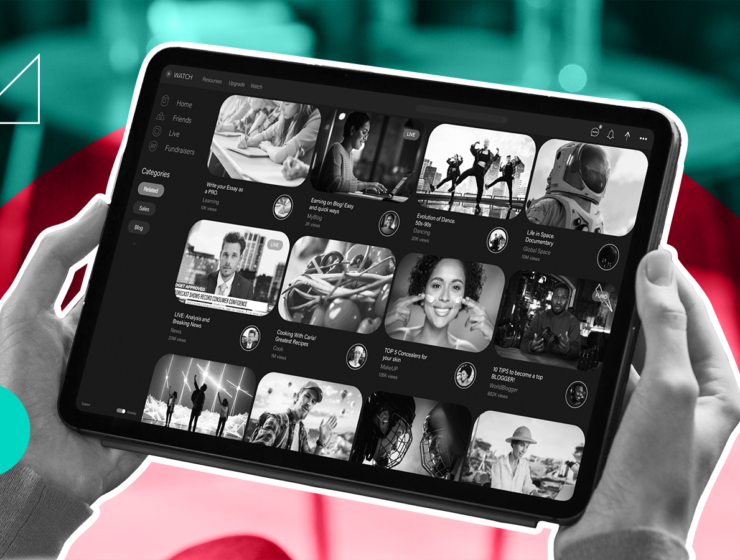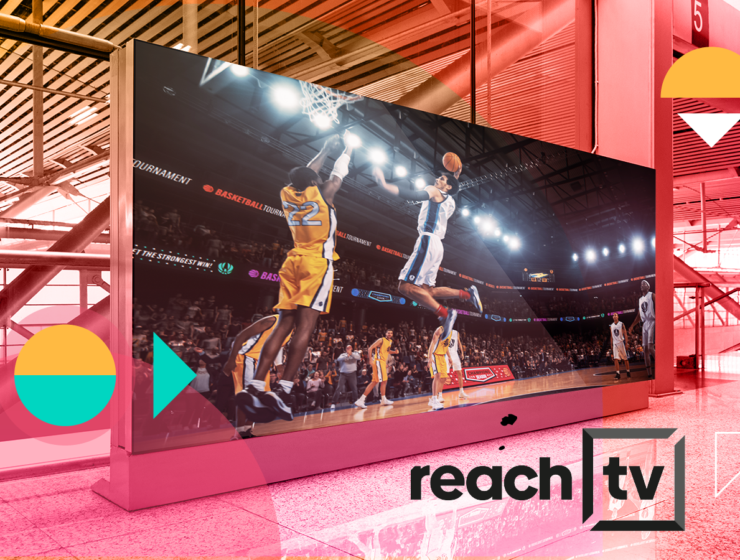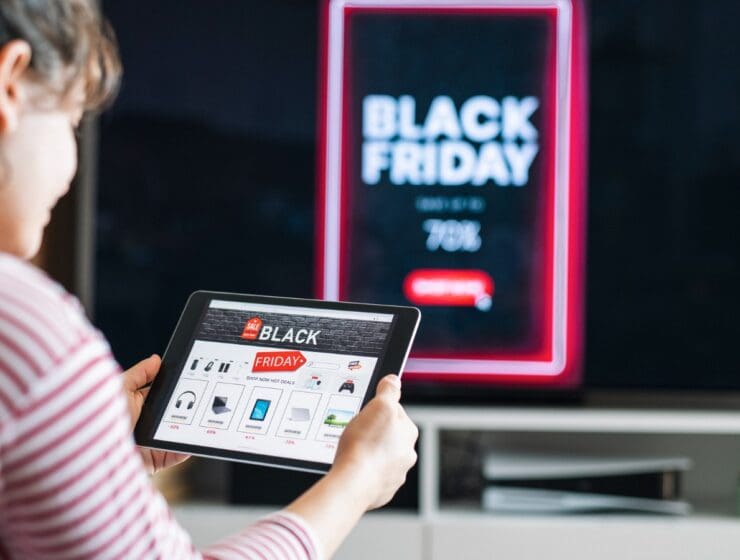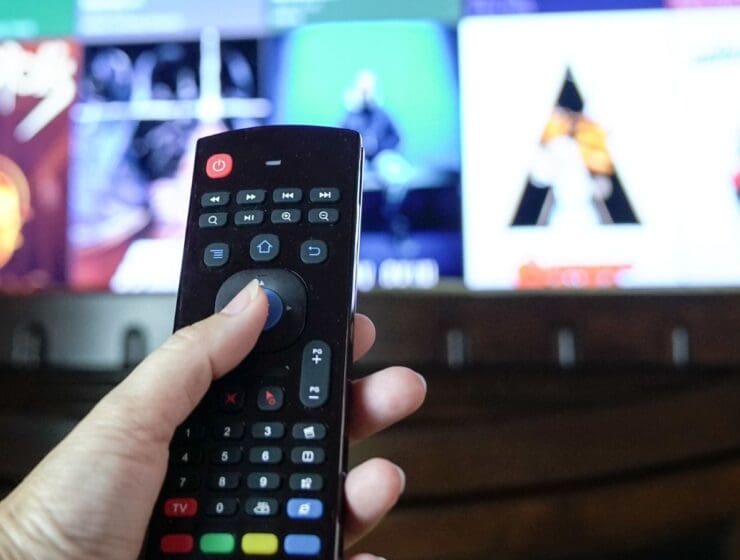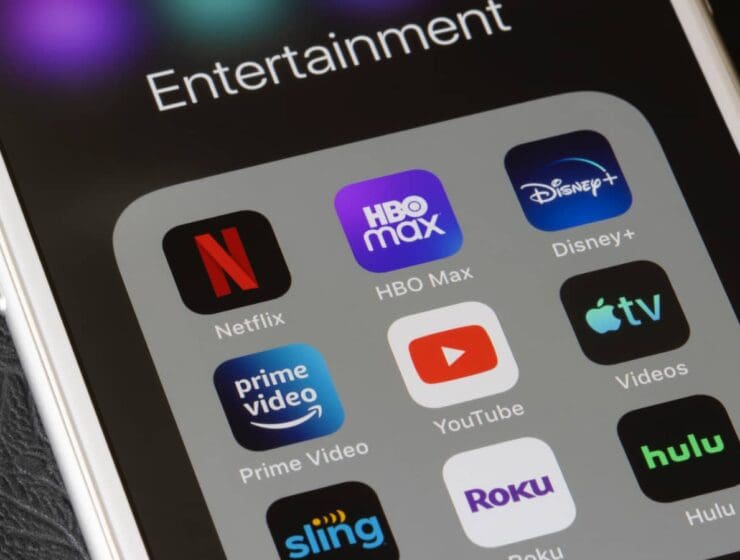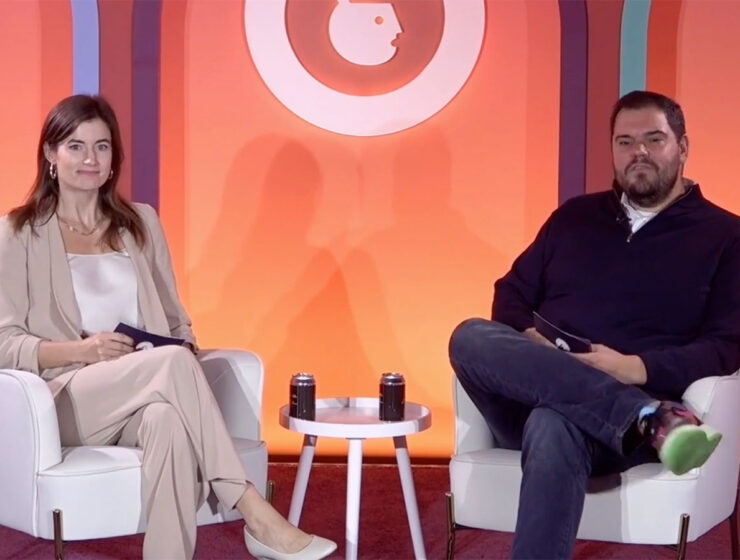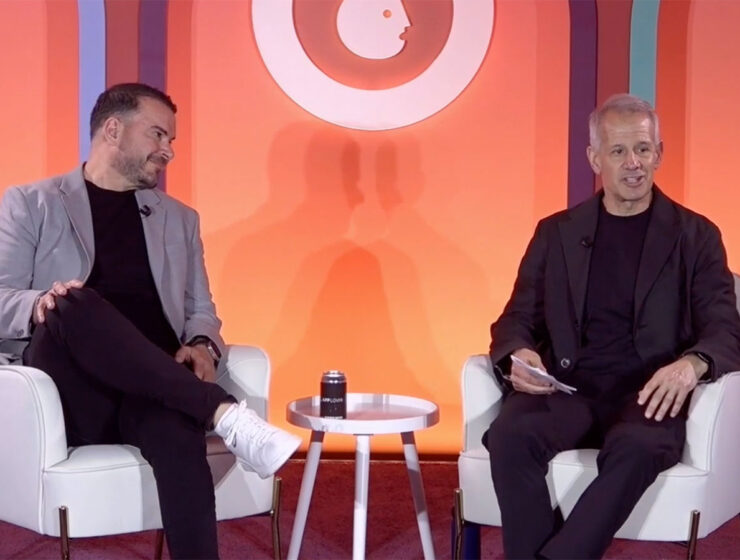CTV advertising is one of the fastest-growing areas of marketing worldwide, and voice commands are the new frontier. It’s not a chocolate bar coming through your TV, but it’s getting pretty close.
Tag: TV + Streaming
The next phase of local ad sales won’t involve chasing the newest channel or adopting the latest acronym.

Signals, not segments, will define how we buy media, optimize creative, and measure media going forward.
Display once evolved from fixed placements to programmatic targeting. CTV is evolving in the same way — from static ad pods to dynamic, creative-driven experiences.
The message is clear: contextual is no longer a fallback. It is becoming one of the most sophisticated tools in digital advertising – privacy-first, brand-safe, scalable, and now, emotionally intelligent.
Innovative collaboration creates personalized experiences reaching over 50 million monthly travelers
Innovative ad formats are an opportunity for advertisers to get their message across in new ways, and to avoid disrupting programming as a typical ad break might.
The challenge for marketers is to ride the wave, using personalized, shoppable CTV to capture attention within a high-growth vertical.
Unless the industry embraces open collaboration and consistent standards, the default solution will always be centralized intermediary control.
Winning a championship is never about one pass or one game; it’s about consistent teamwork across the season. The same is true for data collaboration.
Remember that SPO is an ongoing process – you’ll want to regularly review performance metrics, adjust bids and budgets based on performance, and test new inventory sources and partners.
With the right data strategies in place, the TV advertising industry can mirror the agility of its audiences.
According to GWI’s insights on Gen Z’s key spending habits, in the world of gaming and digital media, many Gen Zers don’t hesitate to pay for the extras and customization they want.
Digital advertisers are well-versed in the practice of retargeting and the ability to reach consumers who have visited a certain site or looked at a product.
While TV has traditionally been viewed as an upper-funnel activity, with the vast reach of broadcasters a perfect vehicle for driving brand awareness, thanks to these initiatives it is now fast becoming a full-funnel proposition.
Interactivity on CTV won’t scale on ambition alone. It requires thoughtful design, resilient infrastructure, and a relentless focus on the viewer.
Even if only a small portion of viewers stick around for a 15-minute video ad, that group becomes more clearly defined as high-intent users.
The streaming revolution is far from over. In fact, with these new tools and strategies, it’s only just beginning and we have built the engine to power this.
The competition is no longer just about selling products; it’s about owning the digital real estate where consumers spend their time and attention.
During Advertising Week’s panel “Prime Time for Outcomes and Creativity,” co-hosted by Happydemics and Olyzon, experts from brands, adtech, and measurement shared how CTV is becoming a critical channel.
The ad market may be facing economic challenges, but connected TV is bucking the trend. Advertisers here can forge a path of their own, delivering rich, at-home and interactive experiences to audiences hungry for more.
YouTube isn’t falling short on investment on its own accord. It’s just being under leveraged by systems that were built for a different era of media.
Connected TV is revolutionising the media landscape, driving digital transformation and shifting viewer behaviour. As a look at the recent TV Upfronts shows, its impact is set to reshape advertising in its own image.
There are a number of factors advertisers can change, and they all add up to a dramatic improvement in CTV ad relevance.
Tried-and-true tactics like upfronts still have a place, but more nimble buying can help brands sustain the kind of performance they need to thrive.
As AI-powered contextual advertising continues to evolve, one key question remains: Are your partners embedding their full adtech universe, or just scratching the surface?
Brands help their cause by combining a memorable ad with frequent logo exposure during the game, connecting the emotive feel of an ad with rational logo recall as well.
In an increasingly crowded streaming landscape, FAST offers advertisers a rare combination of scale, affordability, and precision.
For the first time, advertisers and agencies can directly compare campaign performance on ReachTV to other publishers across screens, via Nielsen ONE Ads.
Advertising Week Europe welcomed Vevo in a conversation regarding the relationship between content quality and engagement with advertisers.
In entertainment, however, everything is cyclical. The episodic drop is making a comeback and, at the risk of sounding too Millennial, I’ve given it a new name: FOMO TV.
As the industry navigates CTV’s rapid growth, it is crucial to establish standardized taxonomies for content signals to reduce fragmentation, facilitate scalable targeting, and enable actionable reporting.
Mini dramas produced in collaboration with actor and Minivela co-founder Carlos Ponce, viral influencer Haydita Veloz, and West Coast production partner Chicano Hollywood
The tools of the past served a purpose, but advertising is quickly growing out of them. New channels deserve new tools and mature channels need updated approaches.
Recognizable songs can be powerful, but the key lies in cultural and emotional relevance, not just name recognition.
The technology exists today to answer all these questions and transform your media buying. Blockchain verification, precise targeting, and outcome-based buying aren’t futuristic concepts – they’re driving real results for brands right now.
Streaming is reshuffling sports rights, influencing viewing habits and changing brand strategies. Programmatic advertising will play a fundamental role for brands that want to tackle fragmentation in sports media and ensure their strategies are on target.
The lessons of 2024 highlight the importance of agility, innovation, and a consumer-first approach. For those who can adapt, the rewards will be significant. For those who can’t, the streaming wars will leave little room for complacency.
In an era where content consumption is rapidly evolving, Group Black is making a bold move. The media company, dedicated to amplifying brands engaging with the New Majority, has announced a groundbreaking multi-film partnership with GenTV, setting the stage for a new era of entertainment distribution.
2025 promises to be a pivotal year for the marketing industry. By addressing these challenges head-on and leveraging the tools at their disposal, marketers have a unique opportunity to shape the future of advertising in a way that drives real impact. The question is, will they rise to the occasion?
Netflix’s approach signals a shift in how brands should think about cultural engagement. It’s not about how loud you can shout or how much you can spend. It’s about understanding where genuine cultural conversations happen and becoming a natural part of them.
Advertisers who embrace differentiated curation tools will gain a strategic advantage in the programmatic marketplace, while publishers will be able to unlock the full value of their inventory, drive incremental revenue, and strengthen their direct relationships with buyers.
The next chapter of CTV isn’t about isolated ad placements – it’s about delivering a holistic, seamless experience that meets viewers wherever they are.
CTV isn’t going away. It’s ability to deliver high-quality campaigns with engaged audiences is unmatched. But it is in the data available on the platform where the real potential lies to differentiate itself from its Linear counterpart.
As we look towards 2025, the industry’s ability to create engaging, performance-driven ad experiences will be critical.
ReachTV, the leading streaming television network for travelers, has teamed up with renowned Chef Lorena Garcia for a new cooking series, Stand & Stir with Chef Lorena Garcia.
Now is the time to eliminate the confusion and provide a clear blueprint for why venue-based streaming is an integral part of future media mixes. Everyone with a vested interest in the space should clearly communicate the benefits of this medium and insist that everyone in the industry should move forward with transparency and a clear communication of why this is different, but as potent, as CTV.
ReachTV, the nation’s largest streaming television network for travelers, boasting over 50 million monthly viewers, has teamed up with The Weather Company, globally recognized as the most accurate weather forecaster, in a new venture set to revolutionize how travelers stay informed about weather conditions at airports across the United States.
A Q&A with Stafaniya Radzinovik, Director, Supply Partnerships (EMEA), Verve Group
Get ready for a wild ride with PlayersTV and Sony Pictures as they team up to unleash an electrifying new content experience that blends the best of sports and entertainment. This isn’t just another collaboration; it’s a full-throttle thrill ride that fans won’t want to miss.
In a strategic move that underscores the evolving landscape of sports media, PlayersTV has announced a new distribution agreement with DIRECTV. This partnership is set to expand the reach of PlayersTV, the first-ever athlete and fan-owned media network, to millions of new viewers, marking a significant milestone in its growth.
In theory, bundling makes sense for both consumers and content providers. They can help viewers save money while helping content providers keep consumers in the ecosystems and unlocking more advertising opportunities.
Eastbourne Borough Football Club (EBFC) and ReachTV have entered into a one-year exclusive naming rights partnership, renaming the Priory Lane home ground as the “ReachTV Stadium.” This collaboration extends the successful relationship initiated in late 2023, which included the pilot of the TV show “Health of the Game.”
Innovative Collaboration Aims to Optimize Viewer Experience and Maximize Ad Revenue Through Cutting-Edge Technology and Seamless Integration
By leveraging transparent and accountable TVOOH offerings that are underpinned by robust reporting and measurement, advertisers can reach their ideal audiences in new and exciting ways, and at the scale required.
The imperative for broadcasters monetizing content on CTV and OTT is clear – mirror and exceed UGC’s transparency benchmarks.
With ever-greater audiences watching live sports and even more ways for advertisers to engage with them, the foundations are in place for advertisers and publishers to create truly world-class experiences that consumers will find every bit as compelling as the sporting action itself.
Fortunately for the NFL and its broadcast partners, the sport has tons of viewers. Any Swift bonus is just that, and not something to bank a strategy on (yet).
There’s a reason why companies like Blockboard are taking so much share from the programmatic players utilizing that $9 billion in long tail video. That reason is transparency for buyers.
Buyers need to be able to lean on their SSP partners for their close relationships to publishers, so trust is key.
Bradbury shares his 30-year perspective on the measurement industry, why he joined VideoAmp at the beginning of this year and how VideoAmp will carry its reputation as the advanced currency provider into Upfronts and the rest of 2024.
Scheduled for launch later this year exclusively on ReachTV, “Dollar Bill” will be hosted by Rancic, who will draw from his extensive experience as a restaurateur and real estate mogul to offer insights into running a successful business portfolio.
Like everyone, the founders and owners of Telly have a price. Will the potential acquirer be willing to offer a price that everyone will accept?
With their commitment to authenticity and diversity, PlayersTV continues to redefine the landscape of sports media, offering an experience unlike anything else available today.
ReachTV has announced the addition of two key executives to its leadership team, in a move signaling continued growth
In this AW360 interview, we speak with Keith Kazerman, President of Streaming at Locality to get his thoughts on the state of local advertising and streaming, Upfronts and what lies ahead for Locality in 2024.
As many services have begun introducing ad-supported subscription tiers, more opportunities are cropping up daily to connect with audiences in this medium.
Right now, the streaming TV industry stands at the crossroads of innovation and protection, and IP address analytics emerges as a guiding path forward.
For political advertisers, the path to connecting with voters is clear – connected TV is key as voters have migrated and are engaged. The share of political spend on CTV/OTT is significant and is expected to grow.
Media owners need technologies that enable them to address these demands, keep audiences engaged, and attract more budget from ad buyers. So, how can SSPs make this task easier for them?
The CTV boom is a natural next step for digital advertising. But let’s not let it evolve exactly the way that desktop and mobile did.
The time has come for advertisers to shed the shackles of outdated metrics and embrace a future where every advertising dollar spent can be directly linked to tangible outcomes.
2024 is a year where these innovations in video will deliver the initial seed of growth that could overtake search in the next 5 years. If your brand is looking to prepare for the future, you should be gathering insights and testing these new formats now.
Reports of the death of linear TV have been grossly exaggerated but there is a reality to the numbers: according to Ofcom there were 2,490 TV programmes watched by 4m or more people in 2014 compared to only 1,184 in 2022.
Premium video providers should continually test and refine ad load for all screens and forms of content. This unlocks a data-driven approach to ad load optimisation and enables providers to uphold premium video’s quality viewer experience for audiences.
PlayersTV has 50+ athlete owners and investors across the NFL, NBA, WNBA, and MLB including Chris Paul, Damian Lillard, Travis Kelce, Dwyane Wade, Carmelo Anthony, Vernon Davis, Kyrie Irving, AJ Andrews, Angel McCoughtry, Deandre Jordan, Natasha Cloud and many more
Nailing the right TV strategy can feel overwhelming. By leaning in and starting with one audience you can help shape TV advertising’s data revolution.
As we celebrate World Television Day, the medium itself is at a crossroads, navigating a landscape in which viewers increasingly have the power to choose what, when, and how they consume content.
PlayersTV and Prisoner Wine Brands Uncorks Exciting New Original Series ‘Vino Talk’ Hosted by NBA Champion Deandre Jordan and Softball Star AJ Andrews
As technology advances, it’s becoming easier to measure CTV ads, allowing advertisers to more accurately understand the true impact of their campaigns – also known as the “halo effect.”
Cable News Network and CW Sports Programming to air on ReachTV’s network reaching 50M+ monthly viewers in hotels and airports nationwide
A Q&A with Lynwood Bibbens, CEO of ReachTV
It’s time for the TV ad industry to scrap the confusing acronyms and start thinking like those outside of the industry.
Understanding how retail data can benefit strategy and define the marketing mix will be unique to each brand, but those that adopt early and build a knowledge base have the opportunity to succeed.
Brands have an opportunity to do more than just be at the mercy of the events of the day.
Key industry organizations like the IAB and MRC will be critical in moving the needle here; encouraging higher standards and accreditations so that content-level analysis and intra-video tagging becomes more widely embraced.
Contextual targeting will not only help to create a better user experience in CTV, it will also help advertisers secure a better return on their investment.
The right technology partnerships can help retailers achieve the scale, accountability, and—importantly—agility needed to compete in the fast-growing commerce media landscape.
Commissioned with Opinium, the Amazon Ads Streaming TV Research Report investigates the challenges and opportunities for advertisers in the UK streaming TV space.
YouTube was both the place to build brands online and to see exciting, original content. But somehow, along the way, that’s been forgotten.
ATV has already upgraded linear TV advertising, but CTV is now forging the category’s future.
CTV offers DTC brands an opportunity to extend the value of their audiences and gain an edge over their competitors, whether they exist as digital natives or more-traditional direct marketers.
Here we’ve selected five that lay out some of the most important considerations for brands crafting their CTV strategies.
Curation and adventure in film and television have been eviscerated by the algorithm. When Blockbuster was a thing, picking a film to watch was actually considered an outing.
TV is experiencing a rapid evolution, fuelled by European marketers’ ongoing interest and investment in advanced TV channels such as video-on-demand (VOD), connected TV (CTV), and linear addressable.
Anonymized data based on consumer opt-in intent is the future. Meanwhile, consumers continue to demand more personalization, and providing more relevant, personalized content catches better attention, ultimately driving ad performance.
Pegged as the ultimate metric to understand the relationship between format, placement, creative and ad effectiveness, how does the attention economy work in practice?
With the technology to plan and execute in terms of a holistic omnichannel view of the market, marketers can really start to guide and clarify the new possibilities which are opening up.
With marketing budgets coming under greater scrutiny, advertisers must ensure that every dollar spent is driving measurable impact.
We will experience a historic renaissance for the TV industry, creating a boon for content producers and publishers and more and better content choices.
This year’s TV upfronts are shaping up to be a pivotal moment for the TV industry, and marketers should be paying close attention.
The real value of a video ad should be measured in how attuned it is to audience interests and preferences.
This data-based approach allows you to incorporate fast-growing new channels into your marketing mix without sacrificing long-term profit.
If we look back at the evolution of streaming we can expect a frenetic flurry of activity and some major shake-ups in 2023.
In more ways than one, the industry is reeling, yes CTV is to 2023 what mobile was to 2008 because entertainment is recession resistant.
In today’s fragmented media landscape, accurately measuring business outcomes across platforms remains a top challenge…
One thing that is for certain, CTV viewers’ adoption of CTV and its capabilities are…
The rise of multi-screen content has forever changed the future of television—and now the experience gap between linear TV and streaming is closing too. And for intrepid brands ready to capitalize on it, the golden age of CTV advertising is finally here.
Consumers have shifted towards TV streaming, and quality, in-demand content is following. Here’s how marketers can stand out in the streaming decade.
What marketers need to know about the future of commerce from Connected TV.
Whatever the future holds for TV streaming, one thing is clear: personalization and accountability is key.
With streaming TV at the heart of their entertainment experience, a robust streaming strategy should underpin any marketing plan that aims to connect with this audience.
Now is the time for advertisers and publishers to start figuring out the role of CTV in their plans and work together with trusted ad tech partners to help them ‘test and learn’ their way to success.
This bigger-picture approach means feeding smart TV data into the wider sphere of rights holders and marketers, to shape a common value currency.
Streaming platforms are now in warfare on multiple levels, advertising dollars and subscribers, which will continue to rumble on.
ShowHeroes Group recently teamed up with market research agency COG, in a groundbreaking study that looked more closely at the behavioural impact of CTV as an emerging tech.
Mars Wrigley teamed up with Amazon Ads and Prime Video to bring the joy of streaming their latest hit with M&M’s in-hand to shelves and screens across the UK.
Advertising on a platform that streams movies or TV shows is expensive. Before brands do that, they need to be certain that’s where their customers are.
A Q&A with Tom Donoghue, VP of CTV at GroundTruth and Mike Brooks, SVP of Revenue at WeatherBug
With a significant number of people using mobile devices and tablets, we’re starting to witness an acceleration in innovations and increased popularity of online streaming.
While historically, CTV has been viewed as supplementary to linear TV buying, we’re moving into a world where it’s central to a TV buying strategy.
Like any new technology, synthetic media has received a lot of negative press over the last few years and has been seen as somewhat of a red herring due to some using it to spread disinformation.
The future of television is before us. It will be connected, measured, targeted and engaged in entirely different ways than we have seen in the past half century.
Why Marketers Should Start Thinking YouTube & CTV When They Think Super Bowl (And Sports in General)
As brands prepare for two of the most significant TV sporting events of the year, they need to adopt a strategy that will allow them to maximize their return on ad spend.
Roku’s scale is unmatched, but the data they offer can pale in comparison to buying directly with publishers, who will share more of their data if you buy with them directly.
Let’s get one thing clear: Connected television (CTV) is TV. It is the same experience happening on the same screen in the same room. Seriously – the reach is now there and advertising spend on CTV is on track to reach $13.4 billion by the end of this year.
Taking a dedicated, strategic approach to this key medium can help to develop better ads for candidates and deliver more relevant ads to viewers.
The IP-based architecture of mobile makes the phone the natural “control point” for understanding audiences at scale and solving addressability, and the arrival of 5G only accelerates that reality.
By getting in on the ground, advertisers can build strong relationships with publishers and other players while helping to build the foundation that many others will soon discover.
Data is the most powerful weapon available to brands in the streaming wars. Combining strong measurement with curiosity and creativity will allow these brands to compete in this hyper competitive environment.
Streaming TV has not only become the most popular form of TV entertainment for audiences, but it has also edged out the linear broadcast for the first time this year.
While it looks like a goldmine, marketers do not have CTV completely figured out yet. In fact, some CTV marketing practices still resemble those from five years ago.
The past year has not been kind to digital media. From the (now-delayed cookie-apocalypse) to Facebook’s continual political troubles to increased scrutiny on digital privacy, it’s safe to say digital media has not had a good 2021.
The ‘old’ has become new once again for TV and video advertising. As a premium environment, traditional TV has historically given advertisers a much greater reach using contextual targeting; with campaigns based around content.
While this has been going on, connected TV (CTV) – which is free from third-party cookies – has seen its viewing figures increase in a massive way, growing by four billion hours per week in early 2020.
To realize its true potential in this time of growth, CTV must glean lessons from the journeys of other digital channels as we head into a privacy-first future.
The average UK home now uses 10.3 internet-enabled devices. With an excess of channels to choose from, audiences are no longer fully reachable via one platform. To keep up with consumption habits, marketers need omnichannel solutions that connect with their core customers as they move between touchpoints.
Streaming TV advertising brings new opportunities to brands as first-party data and the digital infrastructure enables more advanced targeting and measurement capabilities. These capabilities give marketers more control over their campaigns resulting in better ROI.





